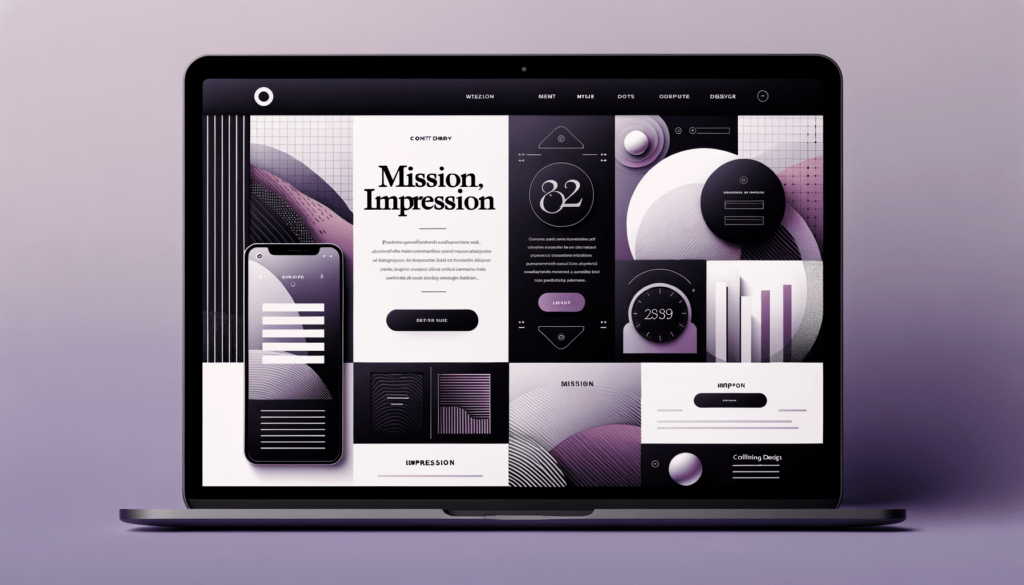
Table of Contents
Introduction
“94% of first impressions are design-related.” That’s right—nearly all first impressions of your brand’s online presence come down to website design. But here’s the kicker: while a visually appealing website can grab eyeballs, the real magic happens when aesthetics meet strategic purpose.
Let’s dive into why creating a compelling and effective website goes beyond mere looks and into the realm of strategic design, user experience, and brand alignment.
Purpose Over Aesthetics
A. Statement of Purpose
Sure, a stunning website is a feast for the eyes, but is it serving its purpose? Purpose-driven design is about prioritizing what your website is meant to achieve—whether it’s conversions, information dissemination, or community building—over just looking good.
B. Target Audience Engagement
Your website should be like a magnet, pulling in your target audience and fulfilling their needs. Understand your audience’s pain points and cater your website design to ease those pain points. An engaging website hooks visitors and keeps them coming back.
C. Example
Take Airbnb, for instance. It’s not all about pretty pictures of dream destinations; the website’s strategic layout guides users to easily find and book accommodations. The design serves its function impeccably.
Visitor Perception
A. Brand Perception Through Design
The way your website looks and feels can make or break brand perception. Want to be seen as a luxury brand? Clean lines, muted color palettes, and high-quality images are your friends. Want to appear approachable? Bright colors and playful fonts can help.
B. Aligning Design with Brand Values
Your website should be a mirror reflecting your brand’s values. From color schemes to typography, every design element should be in harmony with what your brand stands for.
C. Example
Consider Apple. Their website exudes minimalism and elegance, which perfectly aligns with their brand values of innovation and premium quality. The user can sense the brand’s ethos just by navigating the site.
Strategic Aesthetic Choices
A. Deliberate Aesthetic Decisions
Every color, font, and image should have a purpose. A deliberate aesthetic decision enhances user experience and guides them toward desired actions—be it making a purchase, signing up for a newsletter, or reading a blog post.
B. Brand Positioning Through Design
Your aesthetic choices should reflect your brand’s positioning. For instance:
- Luxury Brands: Sophisticated fonts, elegant color schemes, high-resolution imagery.
- Accessible Brands: Friendly fonts, bright colors, relatable images.
C. Example
Tesla vs. IKEA: Tesla’s site uses sleek design and dark themes to exude luxury and innovation. In contrast, IKEA’s site is bright, colorful, and straightforward, mirroring its brand promise of affordability and accessibility.
Functionality and User Experience
A. Importance of Functionality
A beautiful website is useless if it doesn’t function well. Functional design is the backbone of user experience and satisfaction.
B. Key Functional Elements
The crucial elements that affect user experience include:
- Easy navigation
- Fast load times
- Responsive design
These elements not only enhance user satisfaction but also improve search engine rankings.
C. Example
Amazon is an excellent example of functionality. It may not win design awards, but its usability, speed, and seamless navigation make it a user favorite.
Consistency with Brand Identity
A. Importance of Consistency
Consistency is key when it comes to brand recognition and trust. Your website should use the same visual elements, colors, and tone of voice as your other marketing channels.
B. Cohesive Brand Identity Across Touchpoints
Ensure that your brand identity remains seamless, whether your customer is interacting with you online or offline. This cohesion strengthens brand credibility.
C. Example
Coca-Cola excels at this. Their website, social media, and even physical packaging consistently reflect their brand’s iconic elements—red and white color schemes, the classic logo, and sporty, youthful imagery.
Bringing It All Together: A Holistic Approach
A. Integration of Aesthetic and Functional Elements
The secret to a compelling website is balance. Integrate both aesthetic appeal and strategic functionality to provide an experience that’s as beautiful as it is effective.
B. Continuous Improvement
Never rest on your laurels. Use analytics and user feedback to continuously tweak and improve your website. After all, the best websites are those that evolve with changing user needs and trends.
Conclusion
To wrap things up, an effective website isn’t just a pretty face. It’s a combination of strategic purpose, visitor perception, deliberate aesthetic choices, functionality, and brand consistency.
Evaluate your website. Does it align with these principles? If not, consider making some changes.
Next Steps for Readers
Self-Assessment Checklist
Here’s a quick checklist to help you evaluate your website:
- Does my website fulfill its strategic purpose?
- Is it engaging my target audience effectively?
- Do my design elements reflect my brand values?
- Is my website functional and user-friendly?
- Is my brand identity consistent across all channels?
Professional Consultation Offer
Feeling overwhelmed? Don’t worry. Our team of experts is here to help you create or redesign your website to align with these principles. Contact us for a free consultation and let’s make your website not just attractive but truly compelling and effective.
Ready to take your brand to the next level?
Ready to take your Website to the next level?
Subscribe for more Useful Content
This publication contains general information only and Dream Engine is not, by means of this publication, rendering accounting, business, financial, investment, legal, tax, or any other professional advice or services. This publication is not a substitute for such professional advice or services, nor should you use it as a basis for any decision, action or omission that may affect you or your business. Before making any decision, taking any action or omitting an action that may affect you or your business, you should consult a qualified professional advisor. You acknowledge that Dream Enigne shall not be responsible for any loss sustained by you or any person who relies on this publication.



